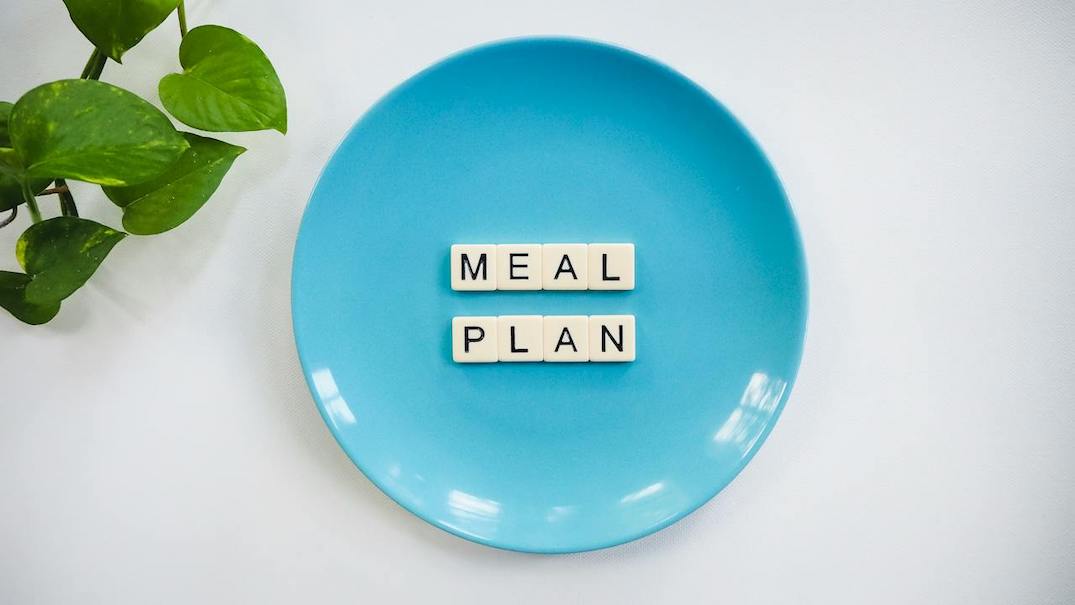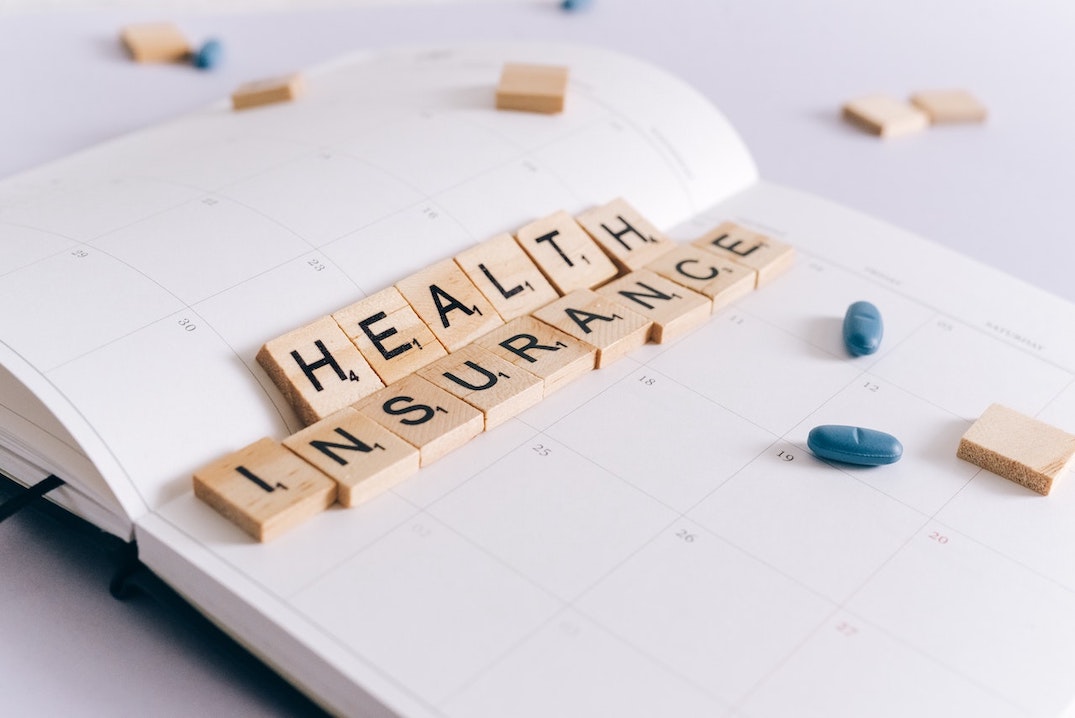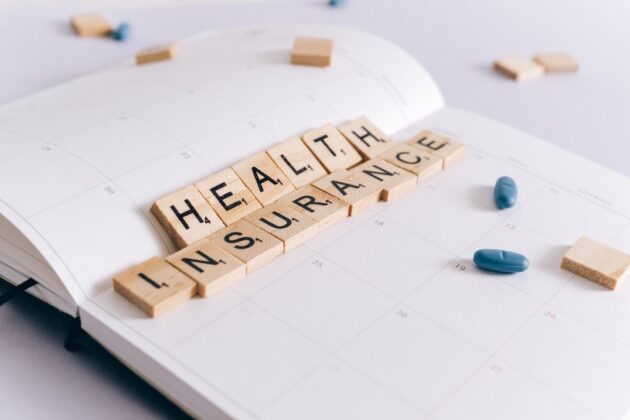Saxenda Diet Plan: Best Foods to Eat & Which to Avoid (with printable PDF)
Weight loss medications have gained popularity over the past few years with more options becoming FDA-approved. If you’re one of the 41% of Americans struggling with obesity, it can be a huge relief to find a medication that works to reduce hunger and help you lose weight.
A popular option is Saxenda (commonly known as liraglutide) which is an injectable weight-loss medication. It’s approved for overweight and obese adults and children over 12 years of age.
Saxenda works by mimicking the glucagon-like peptide-1 (GLP-1) hormone that our body naturally produces. This hormone reduces hunger in two ways. First by slowing digestion, which keeps food in your stomach longer, making you feel full. Second, by sending a signal to the brain that says you’re full. Feeling full more often throughout the day helps to greatly reduce calorie intake, leading to increased weight loss.
But just taking Saxenda is not enough.
To get the best results, you need to combine Saxenda with a healthy diet and exercise. Optimizing your diet with the correct foods and avoiding those that cause side effects or slow your progress will greatly increase your chances of long-term success.
This guide goes over what a healthy Saxenda diet plan looks and includes a free Saxenda meal plan PDF. It also covers the best foods to eat, which to avoid, and tips for success.

Reach your weight loss goals faster with support from a Registered Dietitian
90% of Zaya Care patients pay $0 for one-on-one counseling with an RD
Saxenda diet overview
You may have the question: “What type of diet should I be following while taking Saxenda?” Google away and you’ll get hundreds of answers and opinions.
In reality, there isn’t one specific diet that you should be following. You should focus on incorporating healthy eating habits to maximize the efficacy of Saxenda and to ensure long-term weight loss management.
There are a lot of resources for healthy eating which can be overwhelming when you’re trying to find credible information. I recommend checking out MyPlate. There are great visuals and a ton of great tips on how to implement healthier eating habits.
The main message of MyPlate—which is great to follow as a Saxenda diet plan—is to balance your plate in the following way:
- ½ of your plate fruits and vegetables such as strawberries and sliced cucumbers
- ¼ of your plate protein such as fish or chicken
- ¼ of your plate whole grains such as quinoa or brown rice
Focus on mostly whole foods that you prepare at home, limiting packaged, processed foods. For example, instead of Rice A Roni (full of sodium), choose brown rice. Instead of breaded chicken tenders, choose plain chicken breasts that you prepare and cook at home.
In addition to choosing whole foods, you’ll want to adjust your portions and eating schedule. Saxenda slows how quickly foods digest, which leads to a lack of appetite and feeling full more easily. Eating smaller, more frequent meals can help you get sufficient nutrition throughout the day.
Eat small meals every two to three hours. Aim to incorporate a protein and a fruit or vegetable at each meal. This goes a long way in meeting your daily protein, fiber, and nutrient needs.
In addition to planning for a healthy diet, be sure to be consistent with your intake of fluids. Constipation can be a struggle when taking Saxenda. Water is the best bet, but you can also include low-calorie electrolyte beverages to help meet your hydration needs.
Best foods to eat on Saxenda
Since Saxenda greatly reduces hunger and increases fullness, you’ll need to be strategic with the foods you choose to eat. Your food intake will likely be significantly lower, but your body still needs sufficient calories and protein to avoid nutrient deficiencies and loss of muscle mass.
For weight loss and optimal health, be sure to include the following foods while taking Saxenda:
- Vegetables. Leafy greens, broccoli, cauliflower, cucumbers, and carrots are great sources of vitamins, antioxidants, and fiber.
- Whole grains. Whole-grain bread, quinoa, oatmeal, brown rice, and whole-grain pasta are good choices. These foods can be a little easier to tolerate if you’re feeling nauseous or having difficulty getting in enough calories. Plus, they add some B vitamins and fiber to your diet.
- Fresh fruits. Berries, apples, pears, grapes, and other fruits are another great source of fiber and a natural source of fluids to help digestion and hydration.
- Legumes. Beans, soybeans, chickpeas, and lentils are great vegetarian sources of protein and are super high in fiber to feed the beneficial bacteria in your gut.
- Lean proteins. Skinless poultry, fish, eggs, and lean ground turkey or beef are high-protein foods that make it easier to meet your daily protein needs when your overall food intake is low.
- Healthy fats. Avocados, olive oil, nuts/seeds, and nut/seed butter are sources of healthy unsaturated fats, which help to absorb certain vitamins and stabilize energy throughout the day.
- Dairy. Milk, yogurt, and cheese are the best ways to get sufficient calcium for bone health. If you prefer dairy alternatives, be sure to choose ones that have calcium added.
- Fermented foods. Yogurt, kefir, kimchi, sauerkraut, and other fermented veggies provide your gut with the beneficial bacteria it needs for proper digestion and absorption.
Foods to avoid on Saxenda
While you’re being mindful of your food intake and aiming to get enough quality nutrition throughout the day, you’ll also want to limit or avoid some foods while taking Saxenda to maximize your weight loss and minimize your digestive issues:
- High-sugar foods and beverages. Candy, pastries, desserts, soda, juices, and other high-sugar foods or drinks counteract the benefits of this medication, which lowers blood sugar. Plus, sugar can cause diarrhea or other digestive issues, exacerbating the common side effects of Saxenda.
- Artificial sweeteners and sugar alcohols. Sucralose, saccharin, aspartame, erythritol, and sorbitol, to name a few, have been shown in studies to negatively alter the balance of bacteria in the gut, which can cause issues with digestion, absorption, and weight. Thus, these items can worsen the digestive side effects related to Saxenda.
- Processed foods. Many processed and packaged foods contain added sodium and sugars that can cause bloating and other digestive issues. Plus, they contain little nutritive value and are usually higher in calories than their whole-food counterparts, slowing weight loss.
- Fatty meats and fried foods. Ribeye steak, pork ribs, sausage, bacon, ground beef, chicken thighs, and fast food can slow digestion, which may worsen gas, bloating, and constipation. Plus, these foods contain high amounts of saturated fats, which negatively impact health by raising LDL cholesterol levels.
- Foods high in sodium. Fast food, deli meats, soups, pickles, chips, and other packaged snack foods can lead to high blood pressure and other health concerns as well as cause gas, bloating, and weight gain. With Saxenda slowing digestion, this would aggravate these symptoms.
- Alcohol. Alcohol lowers blood sugar and when combined with Saxenda, which is doing the same thing, low blood sugar episodes can result. Additionally, alcohol increases the risk of pancreatitis, and pancreatitis is already a potential side effect of Saxenda.

Reach your weight loss goals faster with support from a Registered Dietitian
90% of Zaya Care patients pay $0 for one-on-one counseling with an RD
Example Saxenda diet plan
Here is a sample 1,700-calorie diet plan that includes many of the best foods to eat while taking Saxenda listed above. Note that your ideal Saxenda diet depends on your personal situation, including weight, food preferences/intolerances, and more.
You can download and print this Saxenda meal plan PDF by clicking here.
Breakfast (400 calories)
- Oatmeal Delight: Cooked oats (1 cup) with a dash of cinnamon, topped with fresh blueberries (½ cup) and chopped almonds (1 tbsp).
- Protein Boost: A hard-boiled egg for added protein.
Morning Snack (150 calories)
- Yogurt Parfait: Low-fat Greek yogurt (½ cup) mixed with a teaspoon of honey and sliced strawberries (½ cup).
Lunch (450 calories)
- Grilled Chicken Salad: Grilled chicken breast (3 oz) on a bed of mixed greens, cherry tomatoes, cucumber, and bell peppers. Dress with olive oil (1 tsp) and balsamic vinegar.
- Whole Wheat Bread: 1 slice, preferably with no added sugars.
Afternoon Snack (150 calories)
- Carrots and Hummus: Baby carrots (1 cup) with 2 tablespoons of hummus.
Dinner (450 calories)
- Salmon Sensation: Grilled salmon (4 oz) seasoned with herbs.
- Quinoa Side: Cooked quinoa (½ cup).
- Steamed Veggies: A mix of broccoli and carrots (1 cup).
Evening Snack (100 calories)
- Apple Slices: 1 medium apple, sliced and sprinkled with a pinch of cinnamon.
Other tips for having a healthy lifestyle & diet on Saxenda
The purpose of medications like Saxenda is ultimately to improve the health and well-being of those who struggle with being overweight or obese. Along with obesity comes an increased risk for various diseases and health conditions.
Including certain foods and limiting others is one strategy for losing weight and minimizing the digestive side effects of Saxenda. To optimize your diet and maximize weight loss, you’ll also want to implement these healthy lifestyle tips:
- Eat slowly & mindfully. Chew your food and put the fork down between bites. Notice when you’re hungry and try to eat before you feel ravenous. Also, notice when you’re full, stop eating, and leave the last bite or two of food on the plate.
- Stay hydrated. Include about 64 ounces of water in your daily routine. This is hugely important to minimize the risk of constipation and keep your kidneys healthy.
- Prioritize protein. Include protein with every meal and most snacks to keep blood sugar balanced throughout the day.
- Learn to read food labels. This is so important when comparing products and finding the healthiest brands. Here’s a great resource to get you started.
- Avoid overly restrictive diets. While you may lose weight, being on a restrictive diet can decrease your metabolism and lead to rapid weight regain once you’re off the diet. Plus, it could lead to nutrient deficiencies.
- Don’t skip meals. Eat regularly throughout the day including three meals and one to three snacks. This will help you avoid getting too hungry and overeating at meals. Set an alarm to remind you to eat if you need to.
- Work out regularly. Finding movement you enjoy makes it a whole lot easier to stick to a workout routine. 150 minutes of moderate-intensity physical activity and two days of strengthening per week is the recommendation.
- Get plenty of sleep, at least 7 hours. Too little sleep increases hunger hormones and reduces the body’s production of hormones that help you feel full.
- Reduce stress. High stress can lead to increased cortisol production, which in turn may lead to elevated blood sugar and weight gain.
- Consider working with a dietitian. It’s strongly encouraged that you work with a dietitian any time you’re trying to lose weight or optimize your diet.
Why you should consider working with a dietitian while taking Saxenda
I’m going to come off biased here, but in all honesty, any time you want to change or optimize your diet, you should be talking with a dietitian. This is true if you’re trying to lose weight, and especially true if you’re taking medication for weight loss.
There are many benefits to working with a dietitian, particularly when taking a medication like Saxenda. Dietitians are food experts and love sharing their knowledge and practical tips to help others improve their health.
Sure, taking Saxenda on its own will likely help with weight loss. However, working with a dietitian will maximize those weight loss results. Plus, you’ll know you’re doing it the right way—the healthy and sustainable way.
Saxenda often causes nausea and lack of appetite leading to very low calorie intake. You’ll want to review your diet plan with a dietitian to ensure you’re getting sufficient calories and macronutrients to fuel your body.
If you are taking in too few calories for a long period, this can slow your metabolism down making it harder to continue losing weight and keep it off long-term. This can also lead to nutrient deficiencies.
Protein is often something people skimp on when they’re cutting back their calories. Have a dietitian review your dietary intake to make sure you meet your daily protein needs. They can also give you great ideas on how to adjust your diet in small ways to hit those protein goals.
Inadequate protein intake can lead to muscle loss, which isn’t great for strength, but it’s also not great for your metabolism. The more muscle you have, the more calories you burn at rest, which is going to help improve your weight loss results.
A dietitian will play an important role in helping you determine what foods to include in your diet for continued weight loss and weight loss maintenance while minimizing medication side effects.
How Zaya Care can help you book a Registered Dietitian covered by your insurance
Here at Zaya Care, we’re dedicated to helping people find the care they need based on their preferences, needs, and insurance. Many dietitians are covered by insurance.
When you request an appointment with one of our Registered Dietitians, we’ll check your insurance so you know exactly how much you’ll have to pay, if anything at all.
It’s worth noting that 90% of Zaya Care patients pay $0 for nutrition care with a registered dietitian as we are in-network with many major carriers.

Reach your weight loss goals faster with support from a Registered Dietitian
90% of Zaya Care patients pay $0 for one-on-one counseling with an RD
How Saxenda works & can help with weight loss
Reduced appetite and increased fullness are the main ways Saxenda works to help you lose weight. This is due to Saxenda’s ability to mimic the action of the GLP-1 hormone.
So, does Saxenda make you not want to eat? In short, the answer is yes.
Most people taking the medication report that their desire to eat and their overall hunger is greatly reduced. If you’re not hungry, then you’re less likely to think about food throughout the day. This leads to less snacking or grazing and less cravings for sweets.
Taking Saxenda slows how quickly food digests. By the time you sit down for a meal, you likely won’t struggle with intense hunger as you may have in the past. This allows you to slow down, eat less, and still feel satisfied.
Reducing hunger and increasing fullness comes as a great relief to those who have struggled with their weight. This medication allows them the freedom to eat less without having to fight against the constant hunger that usually gets in the way.
If you are not losing weight on Saxenda, it may be due to several reasons such as not adjusting your diet correctly, needing a higher dose, or even not drinking enough water.
>> Read more: Saxenda’s interactions with other medications
There are some medication interactions you should be aware of before starting Saxenda.
Saxenda shouldn’t be used in combination with Victoza as both are liraglutide medications. Neither one should be paired with GLP-1 receptor agonists like Wegovy or Ozempic either.
Be aware of taking any other diabetes medications like insulin with Saxenda as it could cause hypoglycemia or low blood sugar.
According to Medscape, there are other possible medication interactions you may need to monitor. You can check them using the drug interaction tool.
As always, it’s best to reach out to your prescribing doctor and pharmacist to get the most accurate information about possible adverse medication interactions.
Saxenda’s interactions with supplements
Many supplements are safe to take with Saxenda. Multivitamins, fish oil, minerals, probiotics, and protein powders to name a few.
Where you need to be cautious is with any supplements that alter blood sugar. This could be berberine, myoinositol, aloe vera, or even cinnamon (used in therapeutic doses).
This also holds true for any herbal medicines. There’s just not enough information about their possible interactions with Saxenda to say they are safe.
Just as is the case with medications, reach out to your prescribing doctor and pharmacist to ensure your current supplement intake won’t cause any negative interactions with Saxenda.
Side effects of Saxenda
Just like any other medication, Saxenda also comes with a list of possible side effects. You’ll want to go over this list before starting the medication. If you notice anything concerning while taking the medication, be sure to check in with your doctor right away.
The most common side effects include:
- Nausea
- Diarrhea
- Constipation
- Vomiting
- Injection site reaction
- Low blood sugar
- Headache
- Tiredness
- Dizziness
- Stomach pain
- Change in lipase levels
- Fever (in children)
Digestive issues like constipation and nausea are often triggered by the medication’s effect on slowing digestion. Food moves more slowly from the stomach to the intestines.
Hypoglycemia or low blood sugar can be a side effect for children taking the medication even if they are not diabetic. It’s also a possible side effect for adult diabetics who are also taking other medications for blood sugar control.
Headache, shakiness, irritability, sweating, hunger, drowsiness, weakness, fatigue, confusion, dizziness, rapid heartbeat, and jitters are common low blood sugar-related symptoms.
Other possible side effects include:
- Pancreatitis or inflammation of the pancreas
- Gallstones or other gallbladder issues
- Increased heart rate
- Kidney issues leading to kidney failure related to fluid loss and dehydration
- Changes in mood or behavior that could lead to depression
- Serious allergic reactions
Weight loss medications have gained popularity over the past few years with more options becoming FDA-approved. If you’re one of the 41% of Americans struggling with obesity, it can be a huge relief to find a medication that works to reduce hunger and help you lose weight.
A popular option is Saxenda (commonly known as liraglutide) which is an injectable weight-loss medication. It’s approved for overweight and obese adults and children over 12 years of age.
Saxenda works by mimicking the glucagon-like peptide-1 (GLP-1) hormone that our body naturally produces. This hormone reduces hunger in two ways. First by slowing digestion, which keeps food in your stomach longer, making you feel full. Second, by sending a signal to the brain that says you’re full. Feeling full more often throughout the day helps to greatly reduce calorie intake, leading to increased weight loss.
But just taking Saxenda is not enough.
To get the best results, you need to combine Saxenda with a healthy diet and exercise. Optimizing your diet with the correct foods and avoiding those that cause side effects or slow your progress will greatly increase your chances of long-term success.
This guide goes over what a healthy Saxenda diet plan looks and includes a free Saxenda meal plan PDF. It also covers the best foods to eat, which to avoid, and tips for success.

Reach your weight loss goals faster with support from a Registered Dietitian
90% of Zaya Care patients pay $0 for one-on-one counseling with an RD
Saxenda diet overview
You may have the question: “What type of diet should I be following while taking Saxenda?” Google away and you’ll get hundreds of answers and opinions.
In reality, there isn’t one specific diet that you should be following. You should focus on incorporating healthy eating habits to maximize the efficacy of Saxenda and to ensure long-term weight loss management.
There are a lot of resources for healthy eating which can be overwhelming when you’re trying to find credible information. I recommend checking out MyPlate. There are great visuals and a ton of great tips on how to implement healthier eating habits.
The main message of MyPlate—which is great to follow as a Saxenda diet plan—is to balance your plate in the following way:
- ½ of your plate fruits and vegetables such as strawberries and sliced cucumbers
- ¼ of your plate protein such as fish or chicken
- ¼ of your plate whole grains such as quinoa or brown rice
Focus on mostly whole foods that you prepare at home, limiting packaged, processed foods. For example, instead of Rice A Roni (full of sodium), choose brown rice. Instead of breaded chicken tenders, choose plain chicken breasts that you prepare and cook at home.
In addition to choosing whole foods, you’ll want to adjust your portions and eating schedule. Saxenda slows how quickly foods digest, which leads to a lack of appetite and feeling full more easily. Eating smaller, more frequent meals can help you get sufficient nutrition throughout the day.
Eat small meals every two to three hours. Aim to incorporate a protein and a fruit or vegetable at each meal. This goes a long way in meeting your daily protein, fiber, and nutrient needs.
In addition to planning for a healthy diet, be sure to be consistent with your intake of fluids. Constipation can be a struggle when taking Saxenda. Water is the best bet, but you can also include low-calorie electrolyte beverages to help meet your hydration needs.
Best foods to eat on Saxenda
Since Saxenda greatly reduces hunger and increases fullness, you’ll need to be strategic with the foods you choose to eat. Your food intake will likely be significantly lower, but your body still needs sufficient calories and protein to avoid nutrient deficiencies and loss of muscle mass.
For weight loss and optimal health, be sure to include the following foods while taking Saxenda:
- Vegetables. Leafy greens, broccoli, cauliflower, cucumbers, and carrots are great sources of vitamins, antioxidants, and fiber.
- Whole grains. Whole-grain bread, quinoa, oatmeal, brown rice, and whole-grain pasta are good choices. These foods can be a little easier to tolerate if you’re feeling nauseous or having difficulty getting in enough calories. Plus, they add some B vitamins and fiber to your diet.
- Fresh fruits. Berries, apples, pears, grapes, and other fruits are another great source of fiber and a natural source of fluids to help digestion and hydration.
- Legumes. Beans, soybeans, chickpeas, and lentils are great vegetarian sources of protein and are super high in fiber to feed the beneficial bacteria in your gut.
- Lean proteins. Skinless poultry, fish, eggs, and lean ground turkey or beef are high-protein foods that make it easier to meet your daily protein needs when your overall food intake is low.
- Healthy fats. Avocados, olive oil, nuts/seeds, and nut/seed butter are sources of healthy unsaturated fats, which help to absorb certain vitamins and stabilize energy throughout the day.
- Dairy. Milk, yogurt, and cheese are the best ways to get sufficient calcium for bone health. If you prefer dairy alternatives, be sure to choose ones that have calcium added.
- Fermented foods. Yogurt, kefir, kimchi, sauerkraut, and other fermented veggies provide your gut with the beneficial bacteria it needs for proper digestion and absorption.
Foods to avoid on Saxenda
While you’re being mindful of your food intake and aiming to get enough quality nutrition throughout the day, you’ll also want to limit or avoid some foods while taking Saxenda to maximize your weight loss and minimize your digestive issues:
- High-sugar foods and beverages. Candy, pastries, desserts, soda, juices, and other high-sugar foods or drinks counteract the benefits of this medication, which lowers blood sugar. Plus, sugar can cause diarrhea or other digestive issues, exacerbating the common side effects of Saxenda.
- Artificial sweeteners and sugar alcohols. Sucralose, saccharin, aspartame, erythritol, and sorbitol, to name a few, have been shown in studies to negatively alter the balance of bacteria in the gut, which can cause issues with digestion, absorption, and weight. Thus, these items can worsen the digestive side effects related to Saxenda.
- Processed foods. Many processed and packaged foods contain added sodium and sugars that can cause bloating and other digestive issues. Plus, they contain little nutritive value and are usually higher in calories than their whole-food counterparts, slowing weight loss.
- Fatty meats and fried foods. Ribeye steak, pork ribs, sausage, bacon, ground beef, chicken thighs, and fast food can slow digestion, which may worsen gas, bloating, and constipation. Plus, these foods contain high amounts of saturated fats, which negatively impact health by raising LDL cholesterol levels.
- Foods high in sodium. Fast food, deli meats, soups, pickles, chips, and other packaged snack foods can lead to high blood pressure and other health concerns as well as cause gas, bloating, and weight gain. With Saxenda slowing digestion, this would aggravate these symptoms.
- Alcohol. Alcohol lowers blood sugar and when combined with Saxenda, which is doing the same thing, low blood sugar episodes can result. Additionally, alcohol increases the risk of pancreatitis, and pancreatitis is already a potential side effect of Saxenda.

Reach your weight loss goals faster with support from a Registered Dietitian
90% of Zaya Care patients pay $0 for one-on-one counseling with an RD
Example Saxenda diet plan
Here is a sample 1,700-calorie diet plan that includes many of the best foods to eat while taking Saxenda listed above. Note that your ideal Saxenda diet depends on your personal situation, including weight, food preferences/intolerances, and more.
You can download and print this Saxenda meal plan PDF by clicking here.
Breakfast (400 calories)
- Oatmeal Delight: Cooked oats (1 cup) with a dash of cinnamon, topped with fresh blueberries (½ cup) and chopped almonds (1 tbsp).
- Protein Boost: A hard-boiled egg for added protein.
Morning Snack (150 calories)
- Yogurt Parfait: Low-fat Greek yogurt (½ cup) mixed with a teaspoon of honey and sliced strawberries (½ cup).
Lunch (450 calories)
- Grilled Chicken Salad: Grilled chicken breast (3 oz) on a bed of mixed greens, cherry tomatoes, cucumber, and bell peppers. Dress with olive oil (1 tsp) and balsamic vinegar.
- Whole Wheat Bread: 1 slice, preferably with no added sugars.
Afternoon Snack (150 calories)
- Carrots and Hummus: Baby carrots (1 cup) with 2 tablespoons of hummus.
Dinner (450 calories)
- Salmon Sensation: Grilled salmon (4 oz) seasoned with herbs.
- Quinoa Side: Cooked quinoa (½ cup).
- Steamed Veggies: A mix of broccoli and carrots (1 cup).
Evening Snack (100 calories)
- Apple Slices: 1 medium apple, sliced and sprinkled with a pinch of cinnamon.
Other tips for having a healthy lifestyle & diet on Saxenda
The purpose of medications like Saxenda is ultimately to improve the health and well-being of those who struggle with being overweight or obese. Along with obesity comes an increased risk for various diseases and health conditions.
Including certain foods and limiting others is one strategy for losing weight and minimizing the digestive side effects of Saxenda. To optimize your diet and maximize weight loss, you’ll also want to implement these healthy lifestyle tips:
- Eat slowly & mindfully. Chew your food and put the fork down between bites. Notice when you’re hungry and try to eat before you feel ravenous. Also, notice when you’re full, stop eating, and leave the last bite or two of food on the plate.
- Stay hydrated. Include about 64 ounces of water in your daily routine. This is hugely important to minimize the risk of constipation and keep your kidneys healthy.
- Prioritize protein. Include protein with every meal and most snacks to keep blood sugar balanced throughout the day.
- Learn to read food labels. This is so important when comparing products and finding the healthiest brands. Here’s a great resource to get you started.
- Avoid overly restrictive diets. While you may lose weight, being on a restrictive diet can decrease your metabolism and lead to rapid weight regain once you’re off the diet. Plus, it could lead to nutrient deficiencies.
- Don’t skip meals. Eat regularly throughout the day including three meals and one to three snacks. This will help you avoid getting too hungry and overeating at meals. Set an alarm to remind you to eat if you need to.
- Work out regularly. Finding movement you enjoy makes it a whole lot easier to stick to a workout routine. 150 minutes of moderate-intensity physical activity and two days of strengthening per week is the recommendation.
- Get plenty of sleep, at least 7 hours. Too little sleep increases hunger hormones and reduces the body’s production of hormones that help you feel full.
- Reduce stress. High stress can lead to increased cortisol production, which in turn may lead to elevated blood sugar and weight gain.
- Consider working with a dietitian. It’s strongly encouraged that you work with a dietitian any time you’re trying to lose weight or optimize your diet.
Why you should consider working with a dietitian while taking Saxenda
I’m going to come off biased here, but in all honesty, any time you want to change or optimize your diet, you should be talking with a dietitian. This is true if you’re trying to lose weight, and especially true if you’re taking medication for weight loss.
There are many benefits to working with a dietitian, particularly when taking a medication like Saxenda. Dietitians are food experts and love sharing their knowledge and practical tips to help others improve their health.
Sure, taking Saxenda on its own will likely help with weight loss. However, working with a dietitian will maximize those weight loss results. Plus, you’ll know you’re doing it the right way—the healthy and sustainable way.
Saxenda often causes nausea and lack of appetite leading to very low calorie intake. You’ll want to review your diet plan with a dietitian to ensure you’re getting sufficient calories and macronutrients to fuel your body.
If you are taking in too few calories for a long period, this can slow your metabolism down making it harder to continue losing weight and keep it off long-term. This can also lead to nutrient deficiencies.
Protein is often something people skimp on when they’re cutting back their calories. Have a dietitian review your dietary intake to make sure you meet your daily protein needs. They can also give you great ideas on how to adjust your diet in small ways to hit those protein goals.
Inadequate protein intake can lead to muscle loss, which isn’t great for strength, but it’s also not great for your metabolism. The more muscle you have, the more calories you burn at rest, which is going to help improve your weight loss results.
A dietitian will play an important role in helping you determine what foods to include in your diet for continued weight loss and weight loss maintenance while minimizing medication side effects.
How Zaya Care can help you book a Registered Dietitian covered by your insurance
Here at Zaya Care, we’re dedicated to helping people find the care they need based on their preferences, needs, and insurance. Many dietitians are covered by insurance.
When you request an appointment with one of our Registered Dietitians, we’ll check your insurance so you know exactly how much you’ll have to pay, if anything at all.
It’s worth noting that 90% of Zaya Care patients pay $0 for nutrition care with a registered dietitian as we are in-network with many major carriers.

Reach your weight loss goals faster with support from a Registered Dietitian
90% of Zaya Care patients pay $0 for one-on-one counseling with an RD
How Saxenda works & can help with weight loss
Reduced appetite and increased fullness are the main ways Saxenda works to help you lose weight. This is due to Saxenda’s ability to mimic the action of the GLP-1 hormone.
So, does Saxenda make you not want to eat? In short, the answer is yes.
Most people taking the medication report that their desire to eat and their overall hunger is greatly reduced. If you’re not hungry, then you’re less likely to think about food throughout the day. This leads to less snacking or grazing and less cravings for sweets.
Taking Saxenda slows how quickly food digests. By the time you sit down for a meal, you likely won’t struggle with intense hunger as you may have in the past. This allows you to slow down, eat less, and still feel satisfied.
Reducing hunger and increasing fullness comes as a great relief to those who have struggled with their weight. This medication allows them the freedom to eat less without having to fight against the constant hunger that usually gets in the way.
If you are not losing weight on Saxenda, it may be due to several reasons such as not adjusting your diet correctly, needing a higher dose, or even not drinking enough water.
>> Read more: Saxenda’s interactions with other medications
There are some medication interactions you should be aware of before starting Saxenda.
Saxenda shouldn’t be used in combination with Victoza as both are liraglutide medications. Neither one should be paired with GLP-1 receptor agonists like Wegovy or Ozempic either.
Be aware of taking any other diabetes medications like insulin with Saxenda as it could cause hypoglycemia or low blood sugar.
According to Medscape, there are other possible medication interactions you may need to monitor. You can check them using the drug interaction tool.
As always, it’s best to reach out to your prescribing doctor and pharmacist to get the most accurate information about possible adverse medication interactions.
Saxenda’s interactions with supplements
Many supplements are safe to take with Saxenda. Multivitamins, fish oil, minerals, probiotics, and protein powders to name a few.
Where you need to be cautious is with any supplements that alter blood sugar. This could be berberine, myoinositol, aloe vera, or even cinnamon (used in therapeutic doses).
This also holds true for any herbal medicines. There’s just not enough information about their possible interactions with Saxenda to say they are safe.
Just as is the case with medications, reach out to your prescribing doctor and pharmacist to ensure your current supplement intake won’t cause any negative interactions with Saxenda.
Side effects of Saxenda
Just like any other medication, Saxenda also comes with a list of possible side effects. You’ll want to go over this list before starting the medication. If you notice anything concerning while taking the medication, be sure to check in with your doctor right away.
The most common side effects include:
- Nausea
- Diarrhea
- Constipation
- Vomiting
- Injection site reaction
- Low blood sugar
- Headache
- Tiredness
- Dizziness
- Stomach pain
- Change in lipase levels
- Fever (in children)
Digestive issues like constipation and nausea are often triggered by the medication’s effect on slowing digestion. Food moves more slowly from the stomach to the intestines.
Hypoglycemia or low blood sugar can be a side effect for children taking the medication even if they are not diabetic. It’s also a possible side effect for adult diabetics who are also taking other medications for blood sugar control.
Headache, shakiness, irritability, sweating, hunger, drowsiness, weakness, fatigue, confusion, dizziness, rapid heartbeat, and jitters are common low blood sugar-related symptoms.
Other possible side effects include:
- Pancreatitis or inflammation of the pancreas
- Gallstones or other gallbladder issues
- Increased heart rate
- Kidney issues leading to kidney failure related to fluid loss and dehydration
- Changes in mood or behavior that could lead to depression
- Serious allergic reactions
















